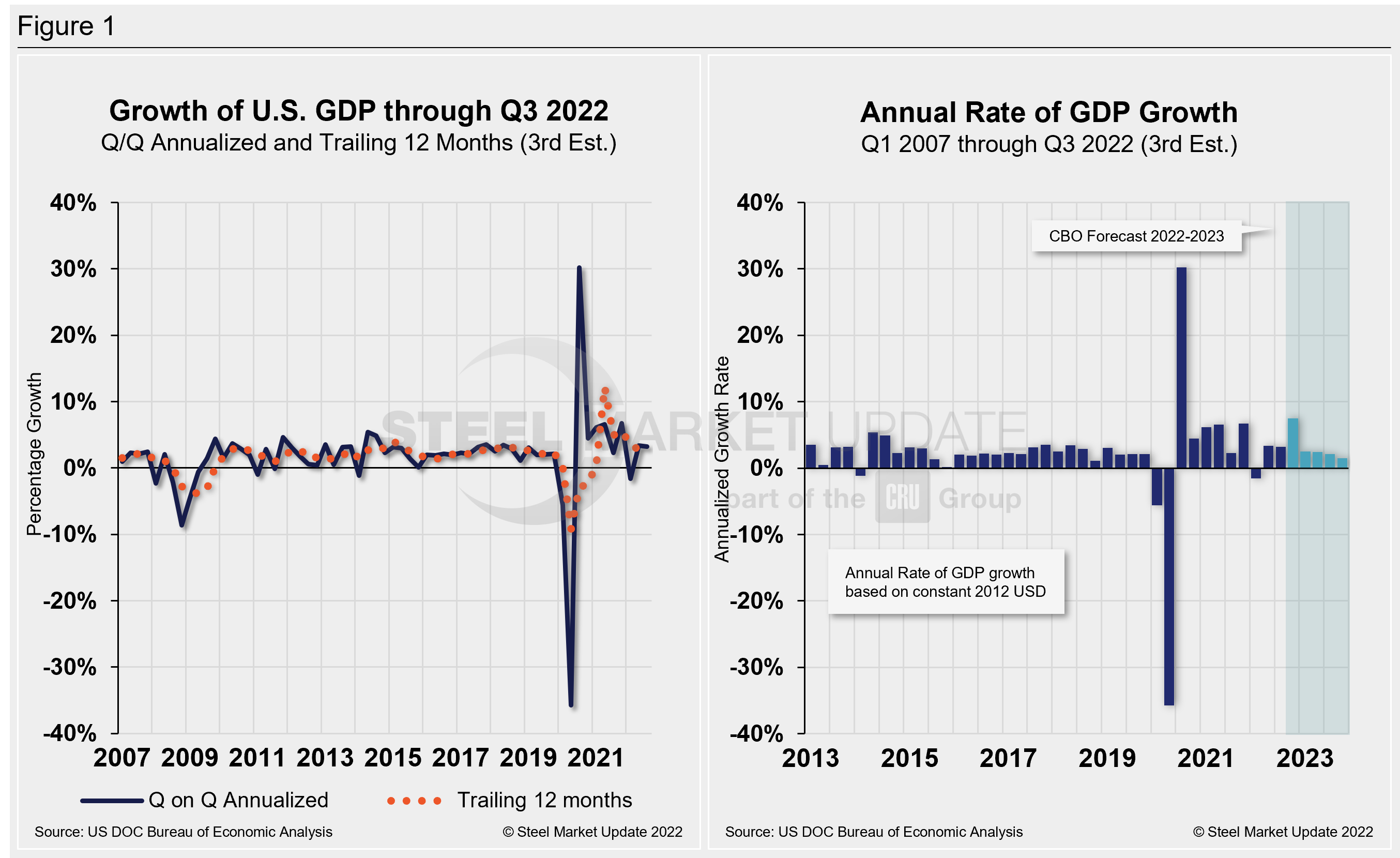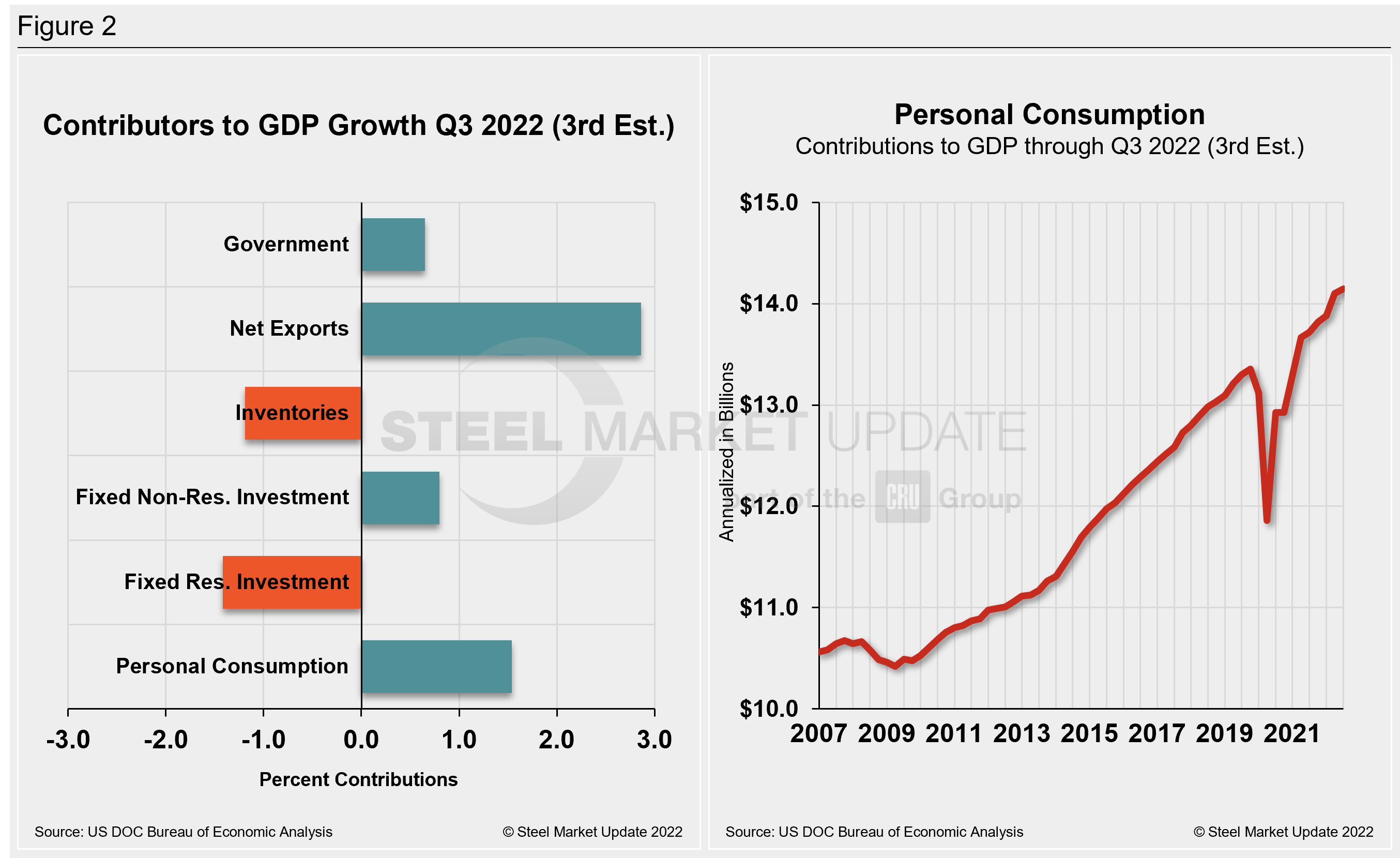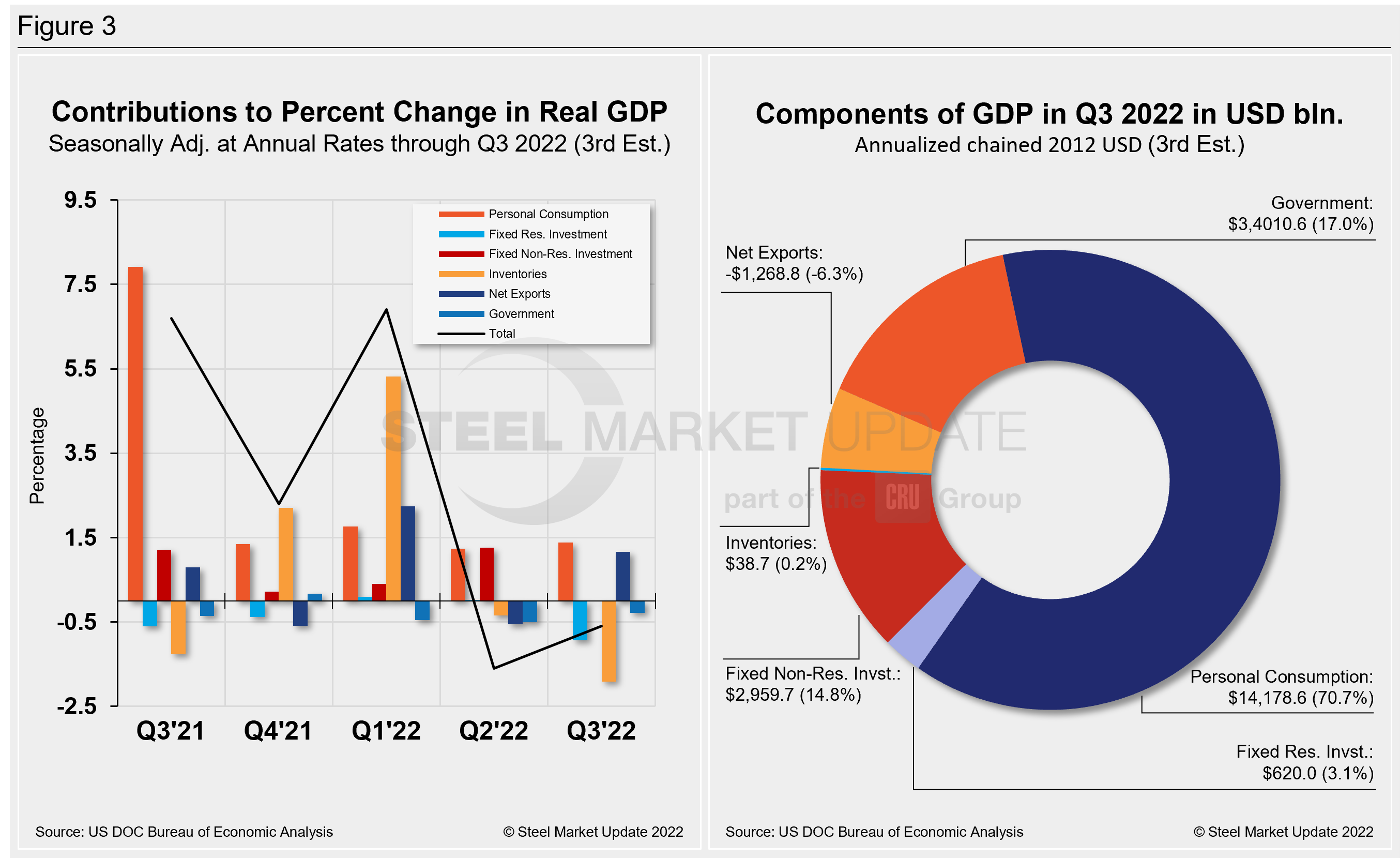Steel Mills
US Economic Growth Revised Even Higher in Q3’s Final Look
Written by David Schollaert
December 22, 2022
The US economy’s growth was even better than expected in the third quarter, the US Commerce Department’s Bureau of Economic Analysis (BEA) said in its third and final review.
Gross Domestic Production (GDP) accelerated to a 3.2% annualized pace in Q3. That’s an improvement from the previously estimated government reading in November, which showed 2.9% growth in economic activity. The result is a sign of economic strength, and a marked turnaround from economic contractions of 1.6% in the first quarter and 0.6% in the second.
The third-quarter growth in GDP should temporarily allay fears that the country is in a recession after the first two quarters showed contraction, yet other details from the report were not as positive. Gross Domestic Income, an alternative measure of economic growth (that theoretically should be in sync with GDP), increased by just 0.8% in Q3 — a point of notable apprehension for the economy.
Still, the better-than-expected growth in the final GDP reading reflected upward revisions to exports and consumer spending that were partly offset by a decrease in spending on new housing, the report said.
Personal consumption – the biggest part of the economy – climbed at a 2.3% pace, accelerating ahead of the prior quarter, and up from the previously reported 1.7% increase, the GDP data showed. Services spending increased, while outlays on goods fell for a third consecutive quarter.
Commerce’s third and final look put the total US GDP in Q3 at $25.72 trillion, a 7.7% annual rate increase, or $475.5 billion, over the previous quarter. Below in Figure 1 is a side-by-side comparison of US GDP growth and the annual rate of GDP, both through Q3 2022. In the first chart, you’ll see the contrast between the trailing 12-month growth and the headline quarterly result. The chart on the right details the headline quarterly results since Q1 2007, including the Congressional Budget Office’s GDP projection through 2023.
On a trailing 12-month basis, GDP accelerated by just 2.96% in Q3, up from 2.72% in the prior quarter but still well behind 12.23% growth in Q2 of 2021. It’s a vast improvement from -9.27% in Q2 2020 at the height of the pandemic. For comparison, the average in 51 quarters since Q1 2010 has been a growth rate of 2.15%.

The final GDP review by the BEA is one of the most backward-looking readings the government releases, looking at the state of the economy from nearly three months back. The current forecast from economists shows growth in the current period will be only 2.4%. And present forecasts are still showing a recession coming down the pipeline next year because of the Federal Reserve’s aggressive interest rate hiking.
But the US labor market continues to flex its muscles despite repeated rate hikes, which are designed to cool inflation but inevitably slow economic growth. Employers have continued to hire at a historically strong pace, although layoffs have increased in some industries, especially technology.
A separate Labor Department report showed that unemployment claims remained relatively unchanged, holding near a half-century low.
One of the biggest drags on economic growth is the pullback in spending on home building amid higher interest rates. Investment in housing construction shaved 1.42 percentage points off overall growth, the report showed.
Shown below in Figure 2 is a side-by-side comparison of two charts. The mix of the six major components in the GDP growth calculation is on the left. The chart on the right puts a spotlight on personal consumption, a measure of consumer confidence and spending engagement.
The most notable change and a major source of GDP fluctuation is personal consumption, which has seen extreme swings since the onset of Covid. It has been resilient more recently but is no longer the bright spot, and is at its lowest mark in two years.

The quarterly contributions of the six major subcomponents of GDP since Q2 2021 and the breakdown of the $25.72 trillion economy in BEA’s second review of Q3 GDP are both shown in Figure 3. The chart on the left is for cross-comparison with Figure 1 above. The right chart shows the other components’ size relative to personal consumption.

By David Schollaert, David@SteelMarketUpdate.com

David Schollaert
Read more from David SchollaertLatest in Steel Mills

Cliffs idles Steelton, Riverdale, and Conshohocken operations
Cliffs has idled facilities in Riverdale, Ill., and Conshohocken and Steelton, Pa.

Radius loss narrows, volumes climb in ‘healthy’ West Coast market
Stronger steel demand in the Western US, rising scrap flows, and improved rolling mill utilization drove sequential gains for Portland, Ore.-based Radius Recycling.

AISI: Raw steel production backs off multi-year high
US raw steel output edged lower last week after hitting a multi-year high in mid-June, according to the American Iron and Steel Institute (AISI).

Private equity firm Atlas Holdings to acquire Evraz North America
Atlas Holdings said it has signed a definitive agreement to acquire Evraz North America (Evraz NA). The Greenwich, Conn.-based private equity firm said it expects the deal for the Chicago-based steelmaker to close in the second quarter of 2025 subject to various closing condition.

Granite City Works must remain open and other terms of the Nippon-USS deal
SEC documents also name Trump specifically as having veto power certain decisions are part of the “Golden Share” provision.
